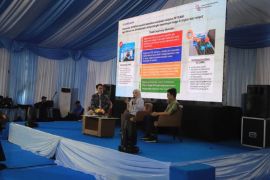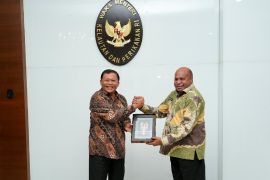"Indonesia is highly committed to protecting the ozone layer," said Arief Yuwono, deputy for environmental destruction protection and climate change to the environment minister, in a press statement released on Thursday.
Through Presidential Decree No. 23/1992, Indonesia ratified the Vienna Convention on the protection of the ozone layer and the Montreal Protocol on the control of ODS, he said.
Therefore, Indonesia has the obligation to phase out the use of ODS and report the annual consumption of ODS to the Ozone Secretariat and the Multilateral Fund for the Implementation of the Montreal Protocol, he added.
As Indonesia is neither an ODS producer nor exporter, the level of Indonesia`s compliance with the convention and protocol is measured through its ability to control the import of ODS, he said.
Since January 1, 2008, Indonesia has stopped importing several types of ODS, including chlorofluorocarbon (CFC), halon, carbontetrachloride (CTC), methyl chloroform (TCA), and methyl bromide (MBr) for the purpose of non-quarantine and pre-shipment fumigation, he said.
Currently, the country only allows the import of hydrochlorofluorocarbon (HCFC) and methyl bromide (MBr) for quarantine and pre-shipment application, he added.
At the meeting of parties to Montreal Protocol in 2007, the parties agreed to expedite the phase-out of HCFC and identify the consumption of HCFC, he said.
The parties to the protocol also agreed to freeze production and consumption of HCFCs at the baseline level, the average of 2009 and 2010 consumption, as of January 2013.
The level will then be reduced by 10 percent starting 2015; 35 percent in 2020; 67.5 percent in 2025; and 97.5 percent in 2030.
ODS comprise chemicals used in the production of, or operation of, various goods such as mattresses, repair of shoes, refrigerators, air conditioners, fire extinguishers, and room fresheners.
The release of these substances into the atmosphere has the potential to deplete the ozone layer. As a result, intense ultraviolet-B radiation reaching the earth�s surface could harm human health, sea life, and plant growth.
Widespread usage of CFCs in the 20th century has led to a hole being developed in the ozone layer above Australia, Antarctica, and the South Pacific.
Also, too much exposure to ultraviolet (UV) radiation, either from the sun or artificial sources such as sun beds may cause skin cancer.
According to the World Health Organization (WHO), approximately 18 million people worldwide are blind as a result of cataract, and five percent of all cataract-related diseases are directly linked to the exposure to UV radiation.
Reported by Desi Purnamawati
(S012/H-YH)
EDITED BY INE
(KR-BSR/H-YH)
Editor: Jafar M Sidik
Copyright © ANTARA 2013











